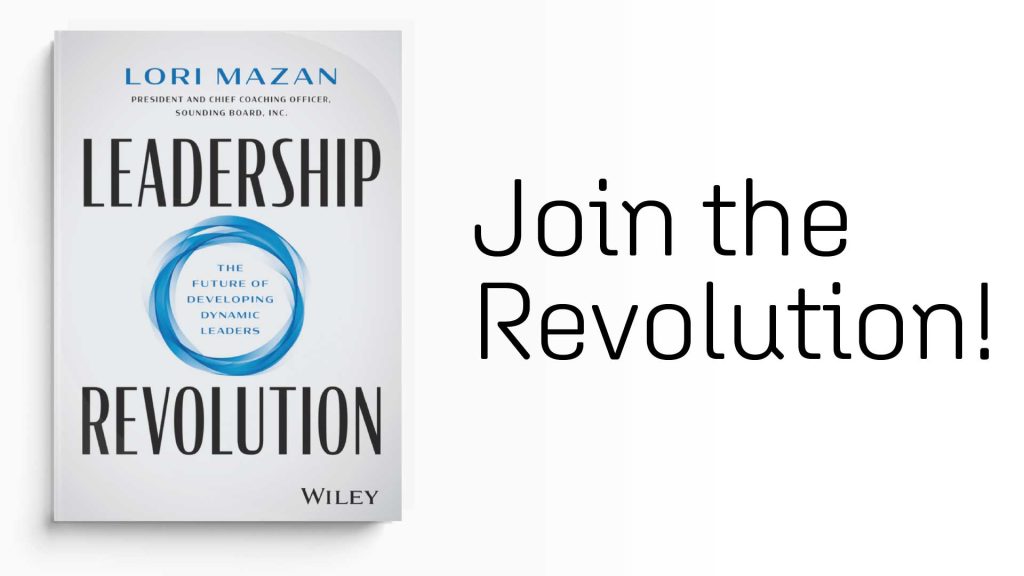In recent times, few concepts have dominated the conversation around leadership development as significantly as the idea of the “Growth Mindset”, an idea researched and coined by Stanford psychologist, Carol Dweck. In essence, Dweck says that individuals who lead with a growth mindset believe their talents can be developed through effort and learning, lending to higher levels of achievement. By contrast, a fixed mindset leads individuals to see their intelligence or talents as permanent and unable to be improved.
In the business world, fixed and growth mindsets have become a bit of a buzzword and according to Dweck herself, its meaning has been distorted in the process. It is true that leaders often share a particular mindset that makes them successful. But to think that the human mind can be confined to a preset binary of either growth or fixed is a great disservice to yourself as a leader and to the organization counting on you. Our challenge to all leaders is to think beyond the buzzwords – beyond the fixed and growth mindsets.
Defining mindsets
In her book Mindset, Dweck asserts that two mindsets predominate our thoughts and behaviors: the fixed and growth mindsets. The growth mindset is grounded in the idea that our talents, abilities, and intelligence are malleable. A growth-oriented leader lives in a world of potentials, where focused learning, an emphasis on process more than outcome, and hard work will lead to success. Individuals that develop a growth mindset embrace challenges and criticism, and view obstacles as opportunities rather than roadblocks or setbacks.
On the opposite end of the spectrum are those with a fixed mindset, which makes people believe their abilities are innate and unchangeable. According to Dweck, this mindset hinders success and achievement. Leaders who have a fixed mindset get bogged down in the black-and-white world of success and failure. Those who believe their abilities are permanent often avoid challenges where they believe they might fail, give up too easily, don’t put in 100% of their effort, and feel threatened by criticism.
As a thought exercise, think back to your most challenging science class. If your teacher wanted to cultivate a growth mindset in their classroom, they might have begun a difficult chapter by saying “this may not make sense at first, but with a little bit of patience and some practice, everyone can pass the next test”. Conversely, if your teacher led their class with a fixed mindset, they might have told you, “Science just isn’t your subject. If you can’t understand this, you should probably give up on science”. In this contrast, leading with a growth mindset encourages and uplifts students to reach their potential, while a fixed mindset is discouraging and diminishes students’ confidence to approach challenges. The same concepts apply when leading teams in business.
Mindset is not binary
“Everyone is actually a mixture of fixed and growth mindsets, and that mixture continually evolves with experience. A ‘pure’ growth mindset doesn’t exist, which we have to acknowledge in order to attain the benefits we seek.” – Carol Dweck
While the classroom example and others like it help to highlight the two extremes of having a growth vs. fixed mindset, it is imperative to remember that the real world is not quite as binary. In reality, most of us reside somewhere along a continuum between the two mindsets, depending on the situation at hand. According to Dweck, there are three major misconceptions people have about growth mindset that hamper their ability to properly apply mindset changes in their leadership:
- I already have a growth mindset, and I always have. People commonly confuse growth mindset with being flexible, optimistic, or open-minded – personality traits that they have long possessed. But the truth is that you can have this personality without having or inspiring a true growth mindset in yourself and others. You can have a positive outlook but shift from growth to fixed mindset, varying by the circumstances in front of you. No one is all growth all the time and treating these concepts as a true binary is a trap that can lead to frustration rather than reward.
- Having a growth mindset just means praising and rewarding effort. Emphasizing the process of learning does not mean forgetting about outcomes entirely. No business is sustainable if its efforts do not yield good outcomes. But good outcomes – the bottom line – follows from focusing on the learning, progress, and efforts that go into the process. As a leader, this might mean encouraging processes that seek help from others or require engaging with different kinds of people. It might mean rewarding those who try new strategies or capitalize on obstacles to successfully move forward.
- Adopt a growth mindset, and good things will happen. As the idea of growth mindset explodes in popularity, more leaders and organizations are inclined to include the modern catchphrase in their mission statements and company values. But these lofty sentiments remain unactionable if leaders don’t implement policies and practices that make them real, attainable aspects of business life.
What this means for leaders
Compared to a purely fixed mindset, having a growth mindset culture can seemingly help develop motivated, successful, and accountable teams. But life is seldom as simple as black and white or fixed and growth. When leaders box themselves and their people into these two categories, they lose sight of the diversity of thought and behaviors that exists in between. Mindset is not a switch; it is a continuum and a process of thinking that informs our behaviors. To see any meaningful change, leaders must commit to modeling the behaviors they outline in their mission statements and inspire the same in their employees.
The coaches at Sounding Board, Inc. can help you develop the right mindset to lead for success. Our coaches don’t just hand you tasks and solutions or exist in binaries; they collaborate with you to help you achieve your own personalized leadership goals. As a leader, this might mean learning to reward employees for constructive learnings, even when teams fall short of the expected outcomes; or supporting open collaboration within organizations, rather than competition among teams. It might mean welcoming challenges with openness, innovation, and just the right amount of risk-taking; or committing to the growth of all team members by sharing knowledge, seeking and providing feedback, owning and growing from mistakes. But most importantly, it means recognizing that there’s more to good leadership than a purely growth mindset.











